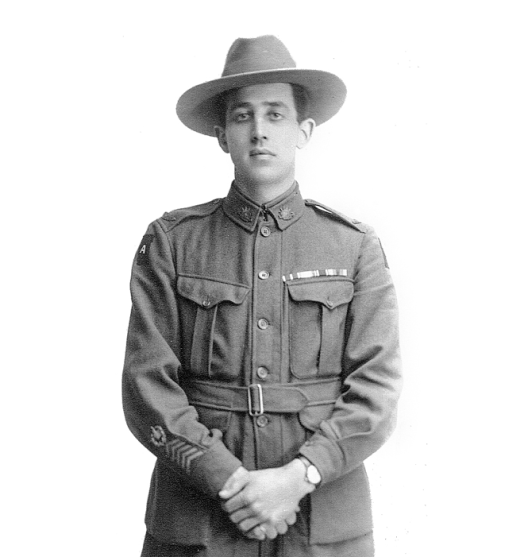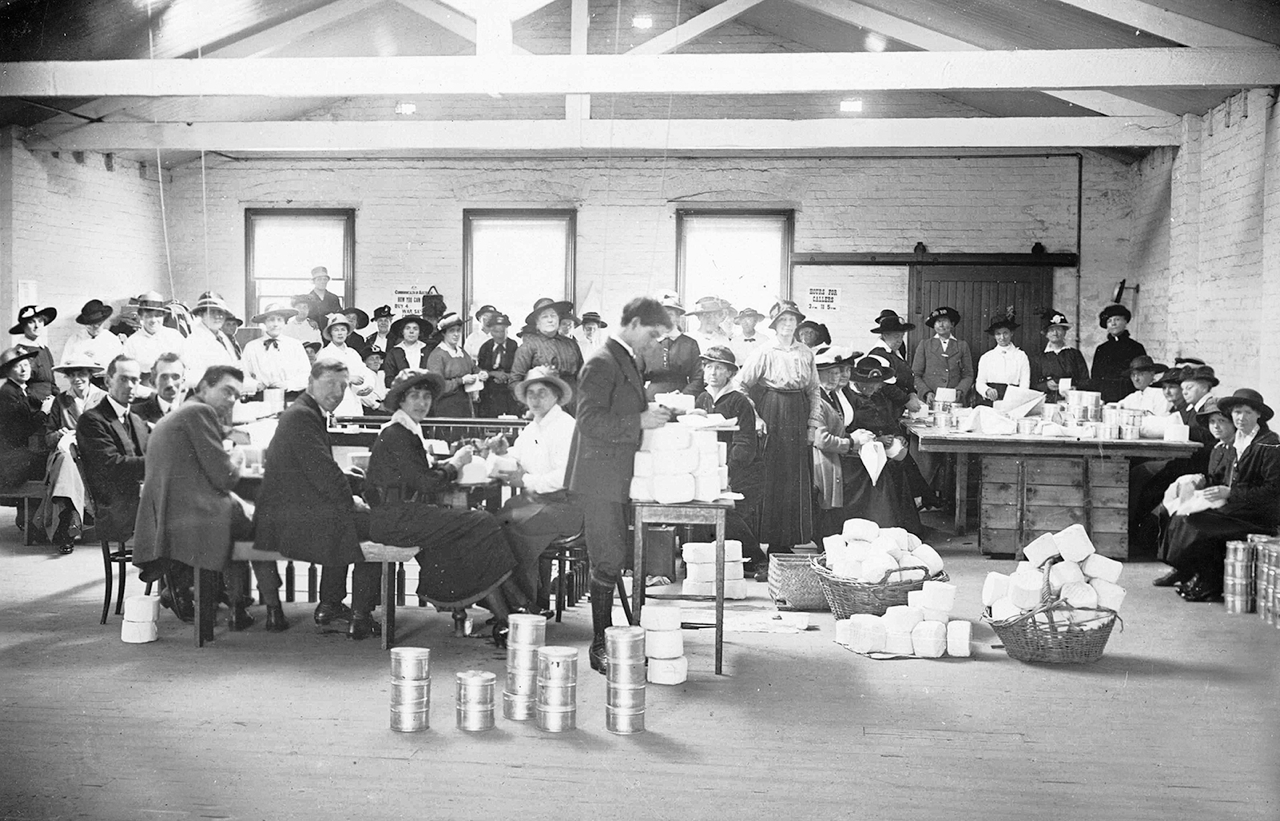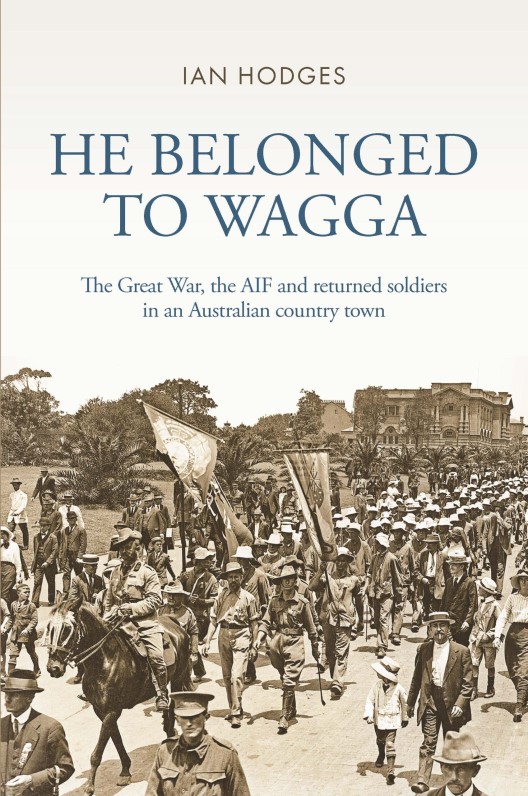Stories of Wagga’s veterans reveal country Australia after the Great War

Reviewed by Dr Dale Blair
In He belonged to Wagga, Ian Hodges, the Senior Historian at the Department of Veterans’ Affairs, weaves a deft tale that traces the lives of Wagga Wagga’s volunteers of the First World War, from the days before the war’s outbreak, through that awful conflict, and into the mid-1930s. It is a story of mixed fortunes.
The war profoundly affected men in diverse ways. Poor health, unemployment and disillusionment became the lot of many, while others prospered and went on to live normal lives.
The popular narrative of the First World War leans toward returned soldiers falling on tough times and suffering the double indignity of war and then the Great Depression. Calamitous as these events were, Hodges challenges this perception and reveals that many men and their families rose above the difficulties to get on with their lives.
Hodges accepts that the war did not cease living in the veterans’ memories but argues that most were able to withstand them, reintegrate into the community, and engage in local recreational, commercial and political activities.

Harry Gissing, a trained pharmacist who served with the 1st and 14th Field Ambulances during the war, is one citizen held up as an exemplar of getting on with life.
Gissing was president of the Wagga Cricket Association and the Australian Imperial Force cricket club, an alderman and mayor, ran a successful pharmacy and launched Wagga Wireless Distributors. Moreover, he helped establish the town’s ambulance service and station, was a prominent figure in the boy scouts and Rotary Club, and was involved in the local Returned Sailors and Soldiers Imperial League of Australia, as well as many fundraising activities. Harry Gissing was a beacon of exceptional positivity.
The book’s heart is derived from sources gathered from historical societies, newspapers, the regional archive at Charles Sturt University, and the repatriation files of returned soldiers. Through them, the tensions of private and town life are revealed and measured against a multitude of civic considerations. These tensions, however, never derailed efforts to support returned soldiers, around which the town maintained a unified fidelity.
One humorous example of town division involved the selection of the town’s citizen band over its brass band to lead the Armistice Day march. The brass band had been more associated with the Australian Imperial Force throughout the war and the prevailing opinion was that it should have been selected. On the day, the brass band turned up and the crowd voted with their feet by following it and putting an end to the formal commemorations.
Hodges succeeds in capturing the broad perspective of life in Wagga through stories that tap into the varying pedigrees of its citizens. It is a story that reveals a sense of pride in town, state, country and Empire, and how the town navigated difficult and troubled times.
Residents of Wagga Wagga and the wider Riverina district ought to read this book if they wish to gain a richer understanding of how the First World War affected local people’s lives.
Wagga’s story, however, is the story of many regional communities throughout Australia and Hodges has provided a wonderful template for regional historians to use to explore their own town’s First World War experience.
Dr Dale Blair is an historian currently working for DVA. He Belonged to Wagga won the NSW Community and Regional History Prize in the 2023 NSW Premier’s History Awards.

Images:
- Mayor Edward Collins (centre) welcomes the Governor of New South Wales to ‘the capital of the Riverina’ from the steps of the Council Chambers during the 1918 Wagga Wagga Show. Before him stands a guard of honour made up of returned soldiers and much younger boys.
- Harry Gissing, on his right arm 5 overseas service chevrons, the ‘A’ for Anzac, and above his left breast pocket the ribbon of the Meritorious Service Medal earned for ‘conspicuous devotion to duty’.
- Wagga volunteers, many from the Red Cross League, packing Christmas Billies for the men on Gallipoli. A typical billy might include tinned food, playing cards, cheese, chocolates, tobacco and often a letter from the person, usually a woman, who packed it. The job was completed on 9 October 1915, when almost 400 billies were despatched.

